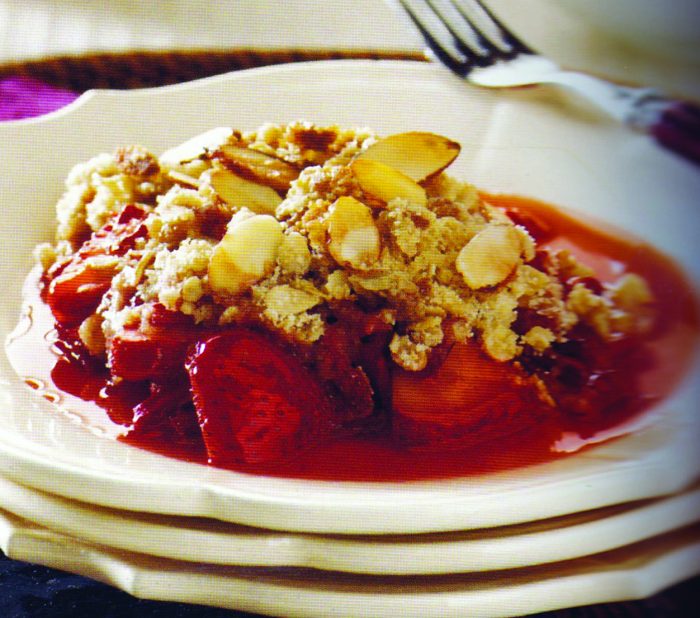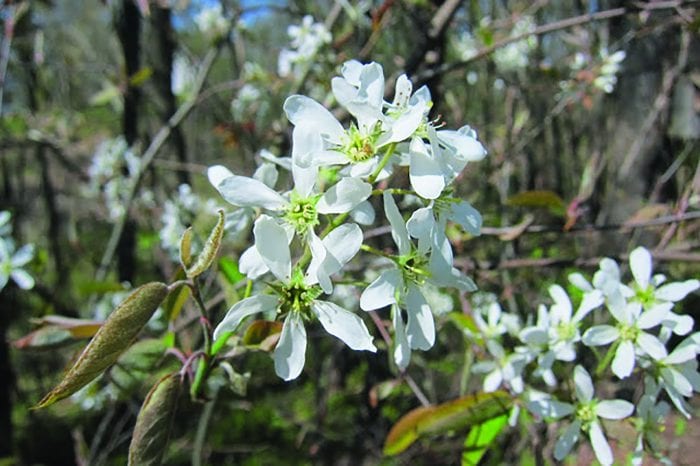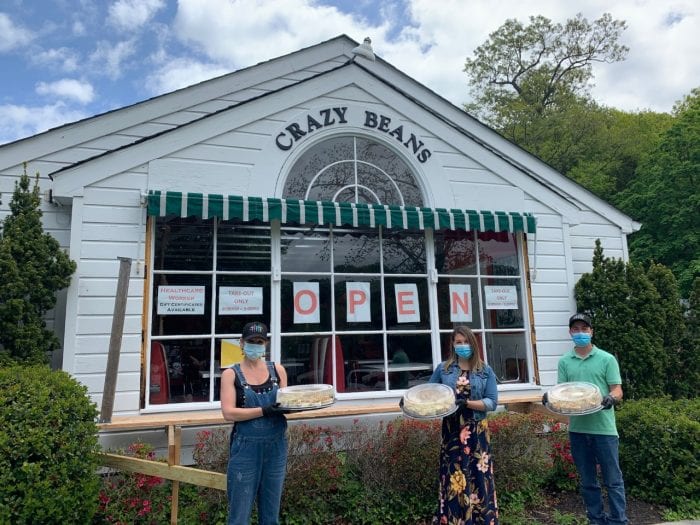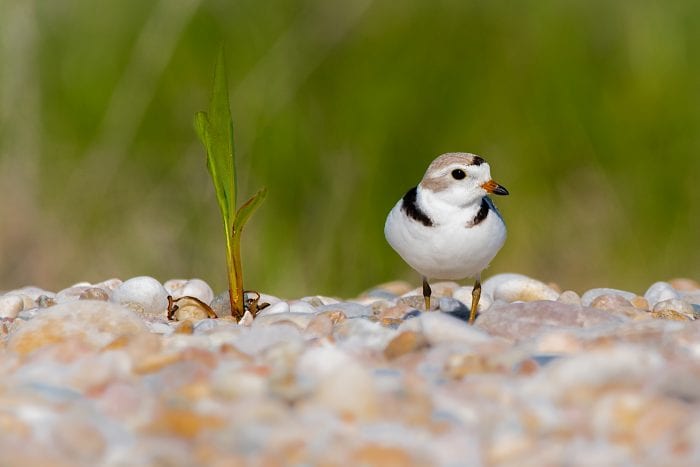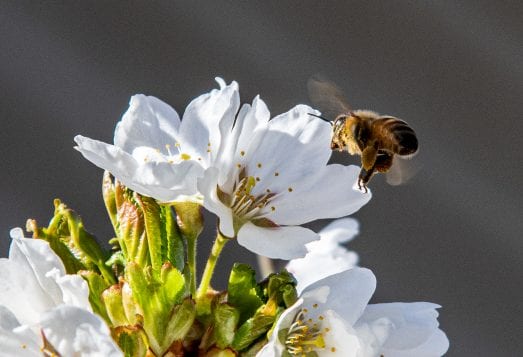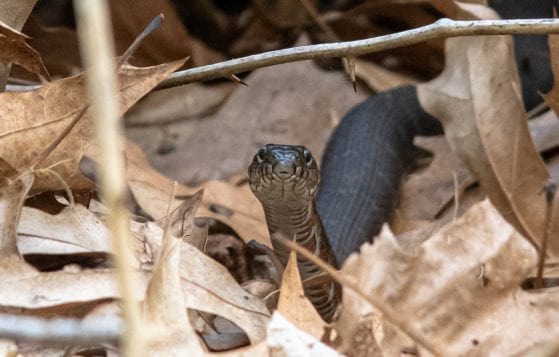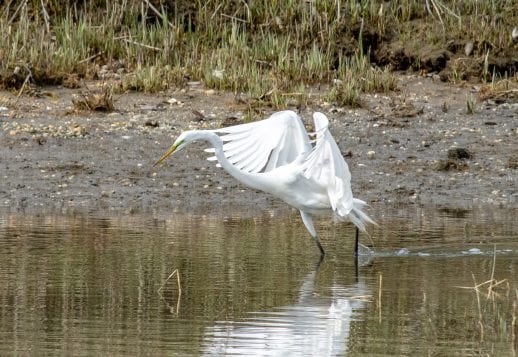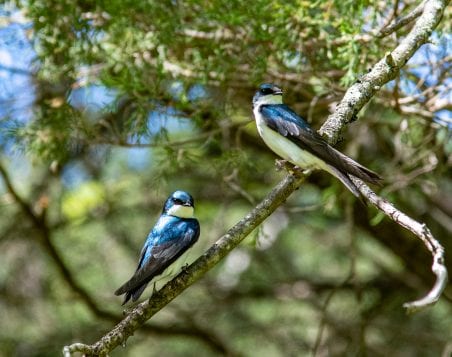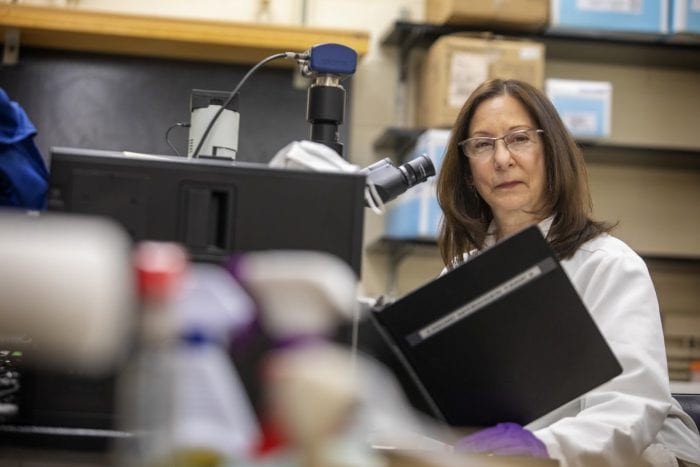By Barbara Beltrami
There are certain magical combinations in the food world. Some are because their flavors or qualities complement each other, some are because they are what the earth and the barn and the sea provide, and some are because they grow and ripen simultaneously. And so it is with strawberries and rhubarb which are at their peak right now and abound at farm stands and in markets. The sweetness of the former and tartness of the latter form a perfect pair, particularly in desserts.
While strawberry-rhubarb pie may be the most well known one, there are some others that are just as mouth-watering, maybe more so, than that old standby. One is a strawberry-rhubarb custard pie where the creaminess of the custard is a perfect foil for the sweet-tartness of the fruit. Another is a roll where cake and syrup create a perfect pair, especially when topped with whipped cream. And finally, a strawberry-rhubarb crisp gives crunchiness to counter the soft fruit. They are all recipes that I remember from way back when.
Strawberry-Rhubarb Crisp
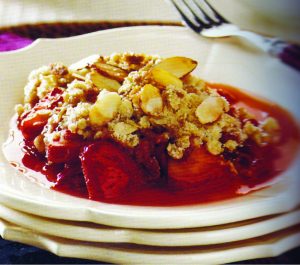
YIELD: Makes 8 servings.
INGREDIENTS:
3/4 cup flour
2/3 cup plus 1/2 cup sugar
Generous pinch salt
3/4 stick chilled unsalted butter, diced
1/2 cup old-fashioned oats
1/2 cup chopped toasted walnuts or almonds
Finely grated zest of one lemon
1 teaspoon vanilla extract
1 quart strawberries, washed, hulled and halved
3/4 pound rhubarb, washed, trimmed and cut into 1/2” slices
DIRECTIONS:
In medium bowl, thoroughly combine flour, 2/3 cup sugar and salt. With fingertips or pastry blender, work in butter until mixture resembles coarse oatmeal. Add oats and nuts and blend thoroughly. Preheat oven to 375 F. Grease or butter an 8 or 9” square nonreactive baking dish. In a medium bowl combine the one half cup sugar, lemon zest, vanilla extract, strawberries and rhubarb. Transfer to prepared baking dish; sprinkle oat mixture on top. Bake until filling is bubbly and top is golden and crisp, about 45 minutes. Serve hot or warm with vanilla ice cream or yogurt or whipped cream.
Strawberry-Rhubarb Roll
YIELD: Makes 4 to 6 servings.
INGREDIENTS:
1 1/2 cups plus 1 tablespoon sugar
1 cup water
2 cups flour
1/2 teaspoon salt
2 1/2 teaspoons baking powder
1/3 cup unsalted butter
1/2 cup milk
1 cup washed, hulled strawberries, halved
1 cup diced, trimmed washed rhubarb
1 /2 tablespoon cinnamon
DIRECTIONS:
Preheat oven to 400 F. In a medium saucepan combine one cup sugar with water. Boil 5 minutes, until sugar is completely dissolved. Pour into an 8” x 8” baking dish. In a medium bowl, sift together the flour, salt, one tablespoon of remaining sugar and baking powder. With fingertips or a pastry blender, work the butter into the dry ingredients until the mixture resembles coarse oatmeal. Stir in milk just until mixture is thoroughly moistened. Turn onto lightly floured board and knead 30 seconds. Roll into a 8” x 15” rectangle; spread with fruit; combine remaining sugar and cinnamon and sprinkle over fruit. Starting at the long end, roll like a jellyroll. Cut into 8 to 12 slices and place in syrup in baking dish. Bake until done, about 20 to 30 minutes. Serve hot or warm with whipped cream.
Strawberry-Rhubarb Custard Pie

YIELD: Makes 6 servings.
INGREDIENTS:
Pastry for a 9” two crust pie
2 cups fresh strawberries, washed, hulled and halved (or quartered) depending on size
2 cups washed and trimmed rhubarb, cut into 1 inch pieces
1 1/4 cups sugar
3 tablespoons flour
1/2 teaspoon nutmeg
1 tablespoon unsalted butter
2 eggs, lightly beaten
DIRECTIONS:
Line pie plate with two-thirds of the pastry. Preheat oven to 400 F. Combine strawberries and rhubarb and place in pastry-lined pie plate. In a medium bowl combine, sugar, flour and nutmeg. Cut butter into tiny pieces and add, along with eggs, to flour mixture. Mix well. Pour mixture over fruit in pie plate. Roll out remaining third of pastry dough, cut into half-inch strips and arrange in lattice design over pie filling. Place pie in oven; immediately reduce heat to 350 F. Bake until rhubarb is tender, about 30 to 40 minutes. Serve warm or at room temperature.

